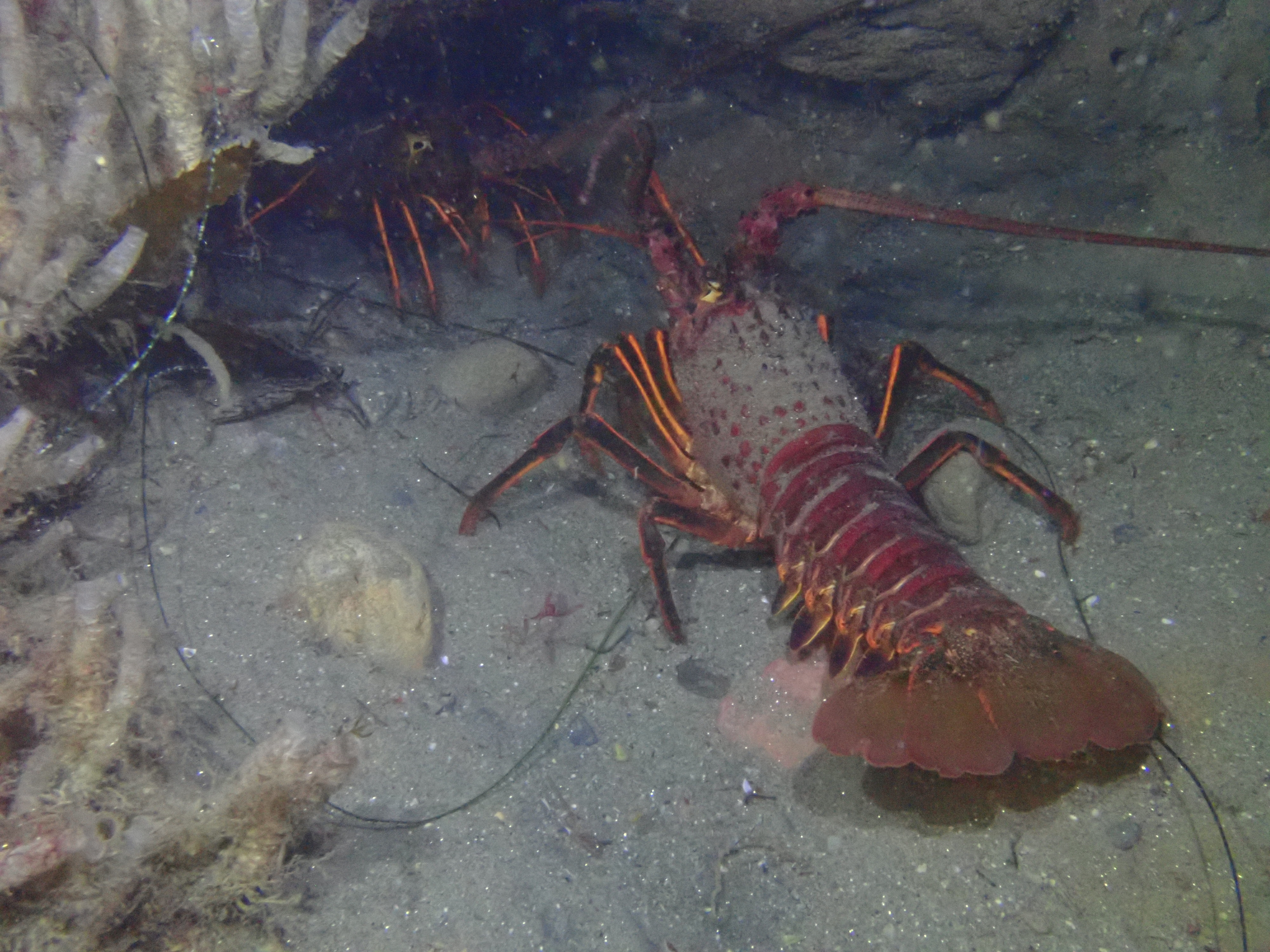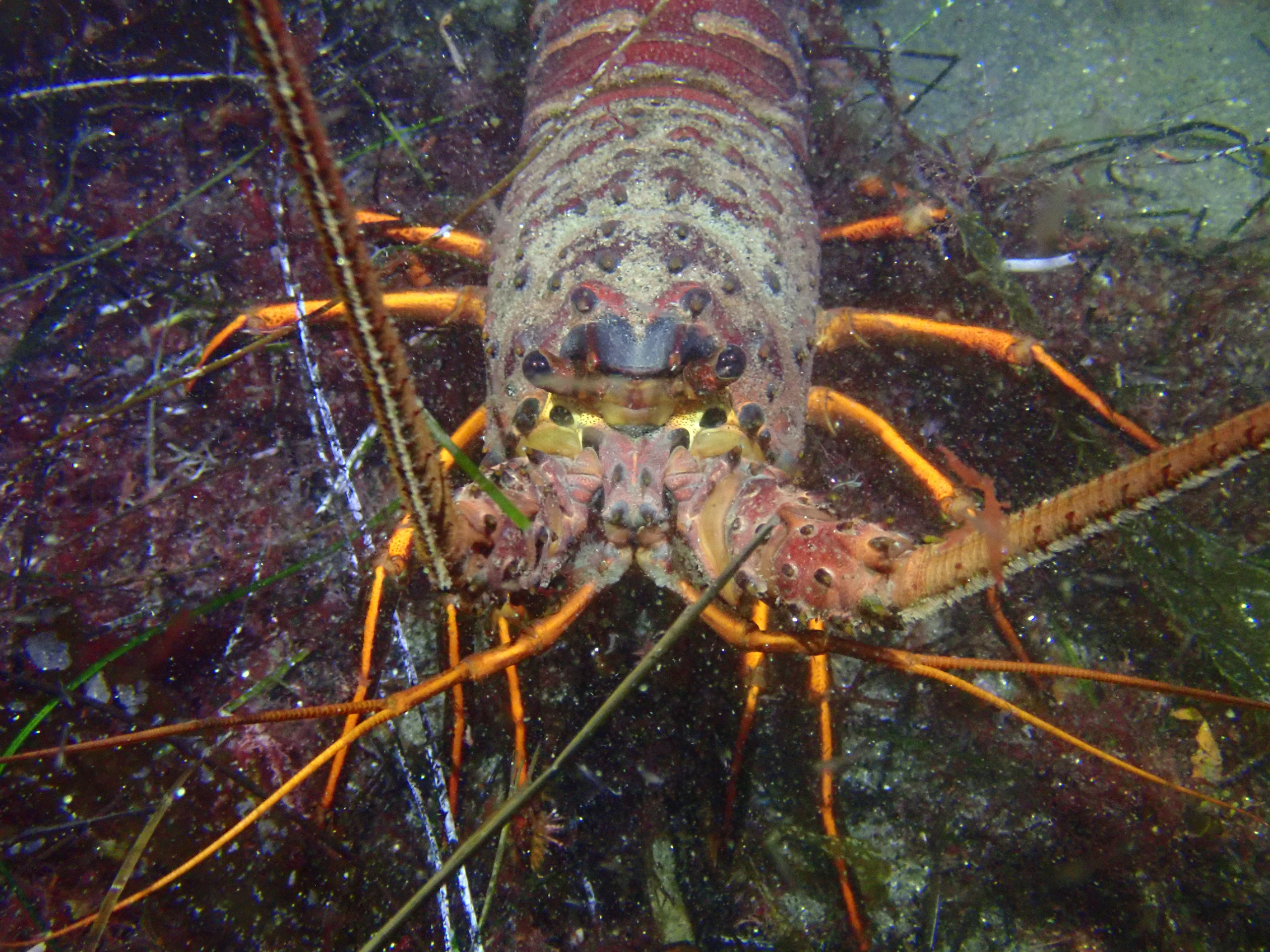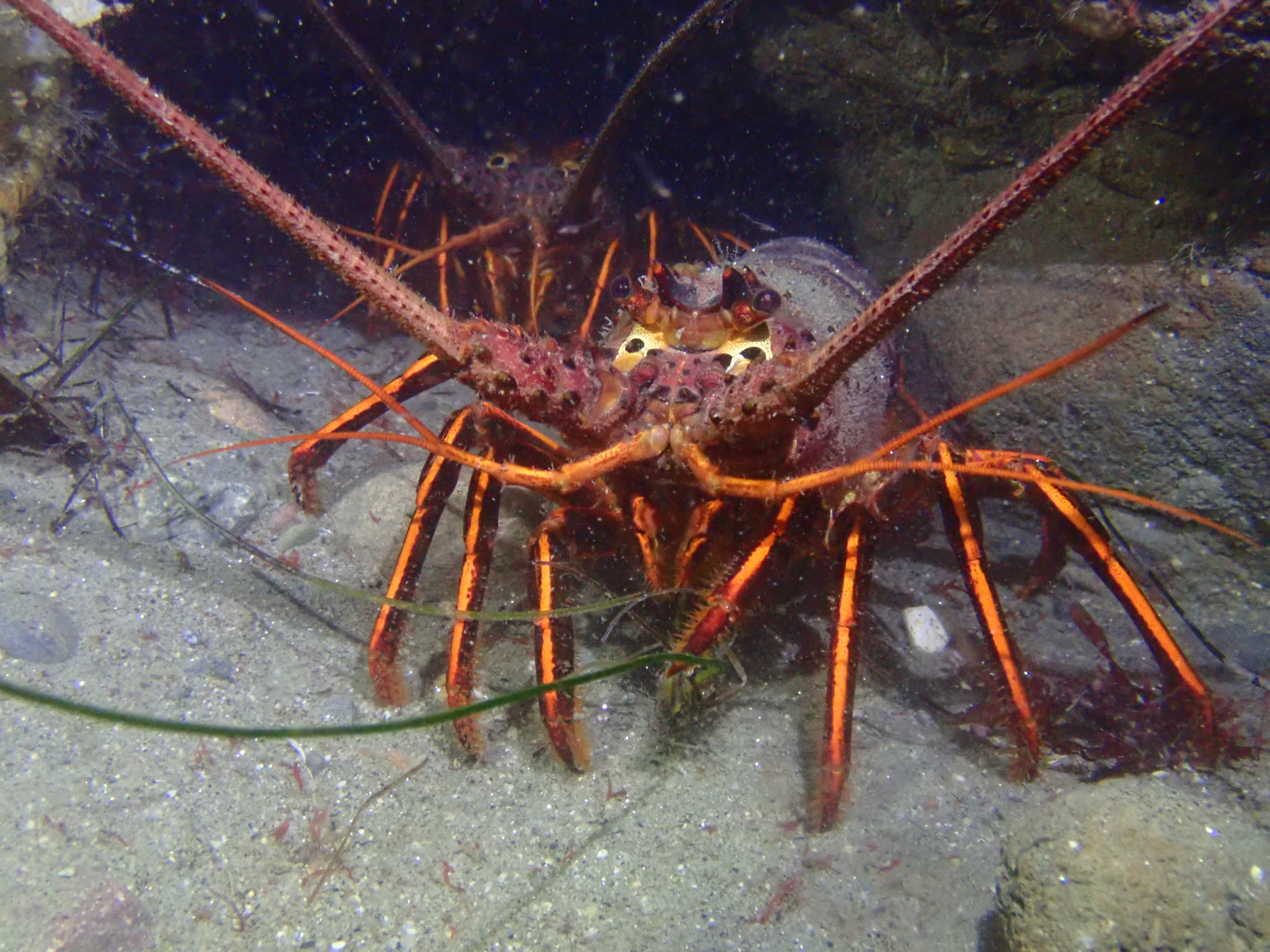California Spiny Lobsters at La Jolla Cove
The sea life at la Jolla Cove is one of the top reasons why people love diving there. The enormous number of diverse creatures make La Jolla Cove one of the best diving spots around. A particular sea creature that divers love seeing are California Spiny Lobsters. They’re amazing creatures that are worth checking out on your dive at La Jolla. This blog will go over everything you need to know about California Spiny Lobsters at La Jolla Cove.
Description
Similar to all spiny lobsters, the California Spiny Lobster has two large antennae. The difference is that they have no claws on their legs. It is one of the largest spiny lobster species as it grows up to 60 centimeters (2 feet) long. It is a decapod (ten-legged) crustacean with sharp, spiny projections along the sides of its tail and upper shell. California Spiny lobsters have a red to orange color. The upper side of the lobster is brownish-red. The legs are a similar color but with one or more lighter streaks running along the length.
Distribution
California Spiny Lobsters are found from Monterey Bay, California to Magdalena Bay, Baja California. Very few can be found north of Point Conception. They are often found on southern California islands and banks. La Jolla cove has plenty of them, so make sure to be on the lookout for them in your scuba tour.

Habitat
These lobsters can be found on rocky substrates at depths of up to 65 meters (213 feet). Although they can be found in shallow waters, most adults are found in deeper waters. You can find juvenile Spiny Lobsters in rocky habitats at depths of 0 to 4 meters (0 to 13 feet), where there are many plant covers. They are omnivorous scavengers that leave to feed shortly after sunset. California Spiny Lobster undergo a seasonal migration inshore from June to September and offshore in the winter months.
Diet
California Spiny Lobsters feed on sea urchins, mussels, clams, and worms. The spiny lobster is eaten by various fish, octopuses, and sea otters, but can defend itself with a loud noise produced by its antennae. The diet of the juvenile varies but mainly consists of amphipods and isopods, together with coralline algae and plants such as Phyllospadix. When available, the juveniles also like to eat crabs.

Life Cycle
Male California Spiny Lobsters reach sexual maturity typically within the ages of 3 to 6 years of age, while females reach it typically within the ages of 5 to 9 years of age. The lifespan of mature Spiny Lobsters is uncertain since they lose all their hard parts after every molt. However, they are thought to live up to 50 years of age or more.
Fun Facts
- The California spiny lobster swims backwards with a flip of the tail to flee predators and is able to crawl in all directions
- They have two antennae that are twice the length of their bodies
- Males lack prominent front claws
- They have strong jaws that can deliver a powerful bite
- There are occasional records of these lobsters in Monterey Bay, but the water there is too cold for them to breed, so it’s thought that any adult found in Central California arrived as a larva during El Niño years.
- Female lobsters brood up to 50,000 eggs underneath their abdomen for 70 days before they hatch
- Lobsters grow bigger by molting their exoskeleton. After crawling out of their old skeleton, their soft body gets bigger and hardens into a new skeleton in about a day’s length
- They have the ability to regenerate lost legs and antennae
California Spiny Lobsters at La Jolla Cove are one of the must-see sea creatures that you should look forward to seeing on your next dive. We hope this blog helped inform you on California Spiny Lobsters at La Jolla Cove. If you would like to check out these sea creatures on your next dive at La Jolla Cove, give us a call at 1-858-397-821 or click here to book your SCUBA or Snorkel tour.
Happy diving!


